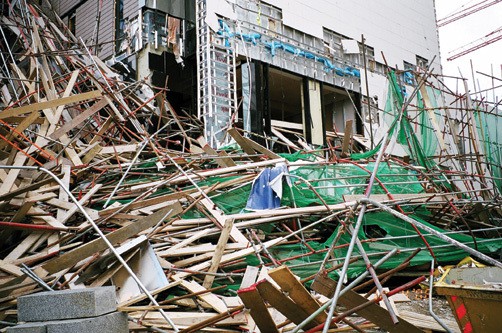
This elegant structural study shows how conformational changes induced by protein–protein interactions within the LKB1–STRAD–MO25 scaffold lead to activation of the kinase LKB1. Structure of the LKB1–STRAD–MO25 complex reveals an allosteric mechanism of kinase activation. MO25α/β interact with STRADα/β enhancing their ability to bind, activate and localize LKB1 in the cytoplasm. Regulation of epithelial tight junction assembly and disassembly by AMP-activated protein kinase.

LKB1 and AMP-activated protein kinase control of mTOR signalling and growth. A serine/threonine kinase gene defective in Peutz–Jeghers syndrome. An allosteric mechanism for activation of the kinase domain of epidermal growth factor receptor. Zhang, X., Gureasko, J., Shen, K., Cole, P.

Phosphotyrosine interactome of the ErbB-receptor kinase family. Activation mechanism of the MAP kinase ERK2 by dual phosphorylation. Structural basis for the recognition of regulatory subunits by the catalytic subunit of protein phosphatase 1. Evolution of protein kinase signaling from yeast to man. The protein kinase complement of the human genome. Cell signaling in space and time: where proteins come together and when they're apart. Domains, motifs, and scaffolds: the role of modular interactions in the evolution and wiring of cell signaling circuits. A lipid-anchored Grb2-binding protein that links FGF-receptor activation to the Ras/MAPK signaling pathway. PTB domains of IRS-1 and Shc have distinct but overlapping binding specificities. Pleiotropic insulin signals are engaged by multisite phosphorylation of IRS-1. A novel transforming protein (SHC) with an SH2 domain is implicated in mitogenic signal transduction. The SH2 and SH3 domain-containing protein GRB2 links receptor tyrosine kinases to ras signaling. Compartmentation of cyclic nucleotide signaling in the heart: the role of A-kinase anchoring proteins. Signaling through scaffold, anchoring, and adaptor proteins. Genetic screening for signal transduction in the era of network biology. Ras1 and a putative guanine nucleotide exchange factor perform crucial steps in signaling by the sevenless protein tyrosine kinase. Ommatidia in the developing Drosophila eye require and can respond to sevenless for only a restricted period. A novel genetic system to detect protein–protein interactions. Kinases and pseudokinases: lessons from RAF. Scaffold proteins: hubs for controlling the flow of cellular information.

Recognition and specificity in protein tyrosine kinase-mediated signalling. Cell signaling by receptor tyrosine kinases. A non-catalytic domain conserved among cytoplasmic protein-tyrosine kinases modifies the kinase function and transforming activity of Fujinami sarcoma virus P130gag-fps. As a result, several scaffold proteins have been identified as ultra-sensitive switches that toggle between opposing cellular processes. Three examples of this are the scaffolds that target phosphatases, those that control protein ubiquitylation and those that control acetylation and deacetylation.Ĭovalent modification of a scaffold protein can determine which binding partners are included in the complex and thus provide alternative functionality. Protein scaffolds can also be organized around signal termination enzymes that attenuate signalling or promote the degradation of key enzymes. AKAPs are dynamic participants in local signalling, in part owing to their flexibility in structure, transient interactions and combinatorial assembly of binding partners. Rather than functioning enzymatically, scaffolds formed by pseudokinases and pseudophosphatases can function as allosteric modulators of other signalling enzymes.Ī-kinase anchor proteins (AKAPs) constrain second-messenger-responsive enzymes, such as protein kinase A, in customized macromolecular units. They confer bidirectional control on cellular processes through the simultaneous recruitment of signal transduction and signal termination enzymes. Scaffold proteins are non-catalytic organizational elements that focus enzyme activity by holding members of a signal transduction cascade in place.


 0 kommentar(er)
0 kommentar(er)
